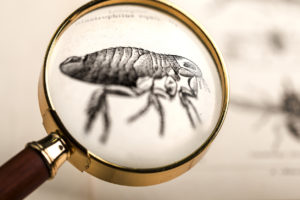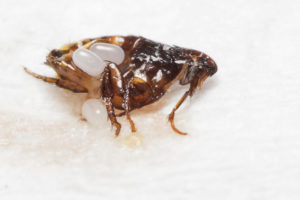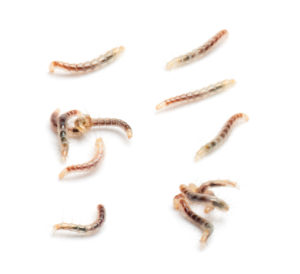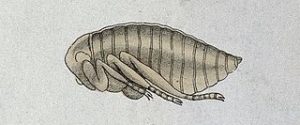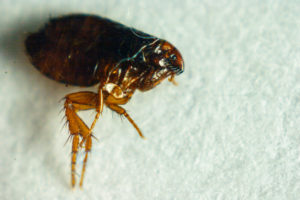The Flea Life Cycle
There are approximately 2,000 different species of fleas currently known in the world. However, most have the same general characteristics; flattened or pancake bodies, backward shaped hairs on their legs, tan to black in color, and an exoskeleton. Fleas move around by jumping and traveling on hosts and can reach heights of up to 12 inches. Since they feast and travel on host animals, they can easily spread dangerous diseases to vastly different areas.
As warmer temperatures near and fleas become more apparent, it is important to stay informed on this inevitable pest. As fleas affect a vast majority of people in the world, it is good to know the extent of their life. From egg to adulthood, learn the life cycle of a flea today!
The Flea Egg
Eggs are the beginning of the flea life cycle and are laid after a blood meal from a host. They can be found in soil, carpet, floorboards, and even bedding after falling off the host animal when it moves. Females can lay up to 40 eggs per day and the eggs can take anywhere from 2 days to 2 weeks to develop and hatch. During this stage, the egg is slightly smaller than a grain of sand, is white in color, and is laid in bunches of 20. Warm and high humidity levels are the preferred environment of flea eggs.
The Flea Larvae
Lasting between 4-18 days, the larvae stage goes through 3 developmental stages called instars. They molt once between each stage, with each shedding allowing for growth. They are 2-5mm long, have a worm-like body, have no eyes or legs, and have a whitish body with pale colored hairs. The larvae feed primarily on flea dirt, which is blood-filled feces from adult fleas excreted after a blood meal. However, they will also consume organic matter, like dead skin, dead insects, feathers, and food particles. Hydration is key to this stage, and so a humidity point of at least 45-50% with warm soil is ideal. If conditions are optimal, the larvae will spin a silken cocoon to enter the pupa stage.
The Flea Pupae
The pupae stage is the last stage before a flea becomes an adult. In this stage, the flea pupae have a resemblance to debris. Although they are often seen enclosed within cocoons, pupae can develop as “naked pupae” – pupae without cocoons. While in this state, they are considered exarate, meaning they have legs free from the body wall. Additionally, how long this stage lasts depends on both environmental factors and access to nourishment. Depending on temperature and amount of food, the pupae can hatch quickly or take up to a year to emerge to adulthood.
The Adult Flea
At this stage, the flea has emerged and reached adulthood. They will now begin searching for blood meals from a host to survive. The adult flea is now approximately the same size as the flea in the larva stage. It is tan to reddish brown to black in color, has an oval shape, and has 3 powerful legs that contribute to its ability to jump and travel. Additionally, their bodies have hair-like bristles on them to help navigate through hair. Dependent on finding a host, a flea can live from 1 week up to 1 year, contingent on an ideal environmental situation being present.
Fleas are a common nuisance that wreaks havoc on animals and humans all over the world. However, knowing their life cycles and preferred environments helps people to reduce and prevent their populations further. Understanding each stage can help you remove them from your home or property for good.
Don’t let the flea population near you get out of hand. Contact The Bug Master today to schedule a free flea inspection! Check out our Austin, Temple, and Waco locations.

